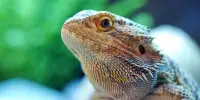Just like birds that flock together, humans also benefit from diversity in various ways. Diversity can bring new perspectives, ideas and experiences, which can lead to increased creativity, innovation and problem-solving skills.
Small, obnoxious Carolina chickadees live all year round in the Southeast of the United States. They often coexist with much larger tufted titmice, white-breasted nuthatches, and different types of woodpeckers.
Chickadees are typically the less dominant members of these mixed flocks, outcompeted by their larger flock mates. Why, then, do chickadees regularly join these flocks? Might they have a symbiotic relationship with other species in these flocks?
I study animal behavior and am especially interested in testing how diverse groups of animals sometimes outperform uniform groups made up of a single species.
One theory for why chickadees or any species, for that matter might associate in mixed-species groups is that these groups may have access to a greater range of cognitive resources, which would boost collective creativity and innovation.
More is more
One of the earliest studies to show the advantages of diversity focused on honeybees and their capacity to keep the ideal hive temperature, which is essential for the growth of eggs and larvae.
Scientists changed the temperature around bee colonies whose genetic relatedness differed. A single male mated with the queen in some colonies, but numerous males mated with the queen in other colonies. The hive temperatures were better maintained by the genetically diverse colonies than by the genetically similar colonies.
The benefits of diversity within a species appear to extend to mixed-species groups as well.
Scientists have shown that Caribbean zenaida doves benefit by being in groups with Carib grackles, a species of blackbird. Zenaida doves do not have alarm calls of their own but respond to the alarm calls of grackles with increased vigilance. Carib grackles, in turn, may gain foraging benefits from interactions with zenaida doves by copying their foraging behavior and movements.
Similarly, Diana monkeys and Campbell’s monkeys in Côte d’Ivoire regularly join up in mixed-species groups. When this happens, both species benefit from the increased number of eyes and ears checking for trouble, allowing them to concentrate on other duties. Campbell’s monkeys move and call more than when they are alone, and Diana monkeys forage more in mixed-species groups than when they are alone.
Birds of different feathers also flock together
My colleagues and I found similar results in our research on Carolina chickadees. These birds are frequently observed in groups with tufted titmice, white-breasted nuthatches, and a few other sporadic species.
We have been studying these flocks for two decades using simple platform feeders as a starting point. Once we found that a flock was using our platform feeder, we cleared the seeds and put them in a hopper-style feeder the birds had never seen before.
We found chickadees in flocks with titmice and nuthatches were more likely to figure out the feeder than chickadees in less diverse flocks. Furthermore, titmice in diverse flocks had a higher chance of success than titmice in less diversified flocks. It’s feasible that people could spend less time patrolling for predators and more time addressing problems if there were more eyes and ears to detect potential threats.
Other research on flocks of chickadees, titmice and nuthatches has supported this idea. These birds vigorously mob any potential predators they spot in an effort to drive them away.
It seems likely that titmice, in particular, benefit from the defensive behavior of the other two species in these flocks as titmice tend to stand back and let the chickadees and nuthatches perform the majority of the work. The question of whether titmice are freeloaders in these flocks or if they provide any protective or food-finding functions is still being researched.
Human diversity
The benefits-of-diversity idea has also been studied in people. Numerous studies have shown that not only do groups make better decisions than individuals, but more varied groups also perform better.
In an experiment involving simulated market judgments, diverse teams performed better than homogenous teams in determining the true market value of items in both southeast Asian and North American populations.
In a different study, juries with a variety of people on them deliberated more skillfully and methodically than juries with only one type of person. Similar advantages of diversity are frequently shown in professional and academic settings. Scientists are becoming aware that diversity benefits not only bees and birds, but also our own species.
















